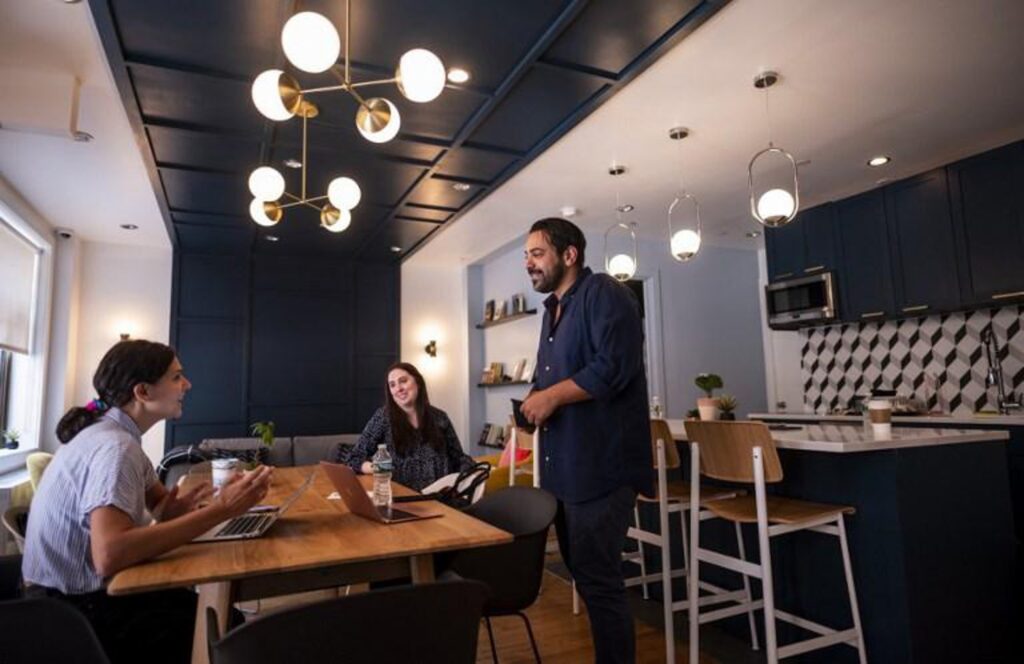The concentration of co-living establishments is contributing to the rise in rental prices in the south-east of the Belgian capital, according to ‘Coliving or the financialisation of Brussels houses,’ a survey just published in the Brussels Studies scientific journal.
Co-living is a “communal living experience,” close to, but to be distinguished from, shared accommodation. It generally consists of renovated single-family houses divided into several rooms that are then rented out individually by a private company.
With young workers from highly skilled immigrant backgrounds as target customers, the median starting price for a room in a co-living scheme was €760 in 2022.
The practice, which emerged in 2016 in Brussels, is bearing fruit.
“The [co-living] sector is taking a significant number of properties off the traditional market and contributing to increased competition between buyers and tenants, pulling up prices,” writes Charlotte Casier, a geography researcher at the Université Libre de Bruxelles (ULB) and author of the study.
The phenomenon is concentrated in the south-east of the capital, in the communes of Ixelles (where the study counted 69 establishments), Brussels-City (47) and St. Gilles (52). Casier identified a total of 2,800 rooms, which is considered “modest” for the region.
The study points to rising rents in the neighbourhoods concerned and a “reduction in the rental supply adapted to local demand.”
“It’s almost normal to witness the multiplication of co-housing initiatives. Renting accommodation alone has become unaffordable since the 1980s,” noted the secretary general of the tenants’ union, José Garcia, who announced that he preferred to focus his action on empty buildings and unoccupied offices.

